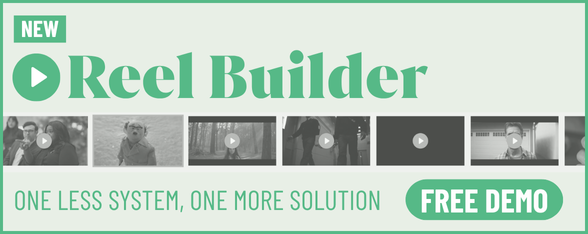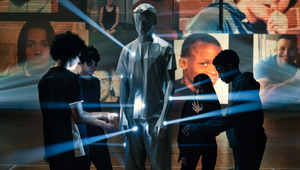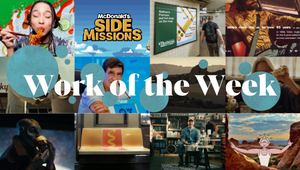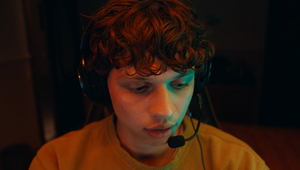
Gus Ribeiro and the AI Elephant in the Room

Gus Ribeiro is an accomplished VFX supervisor, bringing over a decade of experience in high-end visual effects across film, television, and advertising. His career includes tenures at renowned studios such as Framestore, The Mill, Absolute, and Untold.
Gus’ portfolio boasts collaborations with esteemed directors like Dougal Wilson, Sam Pilling, and Chris Balmond. Notable projects include John Lewis’s ‘Excitable Edgar’ and Amazon’s ‘An Unlikely Friendship’. In television, his work on Netflix’s ‘The Crown’ stands out, contributing to its VES Gold Stick award for visual effects.
His film credits feature major titles such as ‘Paddington 2’, ‘Fantastic Beasts: The Crimes of Grindelwald’, and ‘Avengers: Infinity War’, the latter earning both Oscar and BAFTA nominations for VFX.
LBB> What’s the biggest misconception people have about VFX?
Gus> That we can fix everything in post! Sure, VFX can do a lot, but it's not magic. Artists often end up working really hard to fix things that could’ve been avoided with just a bit more planning. The best results always come when the VFX team is involved early on.
LBB> There are two ends to the VFX spectrum — the invisible post and the big, glossy 'VFX-heavy' shots. What are the challenges that come with each of those?
Gus> I think the big, glossy VFX shots are a bit more forgiving. When you’ve got a giant robot fighting a monster, people know it’s not real, even if it looks amazing. The real challenge with those kinds of shots is the complexity. You’ve got multiple teams, animation, FX, lighting, comp, all working on different parts, and everything must come together and feel like it belongs in the same world.
Invisible effects are a whole different challenge. The goal is for no one to notice them, which means you’ve got to be super precise. You need a good eye for what looks real and the technical skills to recreate all the little details, lens distortion, grain, subtle lighting changes, haze, reflections. It takes a lot of subtlety and control to pull those off without drawing any attention.
LBB> As a VFX person, what should directors be aware of to make sure you do the best possible job for them?
Gus> Nothing beats reality. One of the most valuable things directors can do is allocate proper time for shooting reference material and VFX plates. Those elements are gold in post and can make a huge difference in how grounded and believable the final work looks.
LBB> VFX is a true craft in the classic sense of the word. Where did you learn your craft?
Gus> It started when I was 16 back in Brazil, working with editing and colour grading. That’s where my interest in post really began. Later on, I moved to Barcelona to study VFX more seriously. I went to film school and completed a masters in compositing and another in 3D. But honestly, I’ve learned the most from working alongside colleagues and being part of the VFX community.
It’s a tricky question because I’ve never had another job. I’ve been working in post my whole working life. And even now, I feel like there’s still so much to learn.
LBB> Think about the very, very start of a project. What is your process for that? Do you have a similar starting point for all projects?
Gus> It really depends. Sometimes the ideas are already well defined, and in those cases, it’s about figuring out the most efficient and effective way to bring them to life and meet expectations. Other times, it’s more open – we’re helping to design the look of the effects, exploring references, testing out techniques, and finding new ways to approach the work. That takes more time, but it’s also where things get creative and collaborative.
LBB> We imagine that one of the trickiest things with VFX is, time issues aside, deciding when a project is finished! How do you navigate that?
Gus> It’s never really finished! There’s always something you could tweak or improve. But over time, I’ve learned to prioritise what matters for the shot and the story. One thing that really helps is getting fresh eyes on the work – asking for feedback from people who weren’t involved in the project. They’ll often spot things you’ve become blind to.
LBB> Is there a piece of technology or software that's particularly exciting you in VFX? Why?
Gus> The big elephant in the room right now is AI. I recently read a paper from Microsoft about a ray tracing AI, and I’ve seen some impressive tools that convert images into 3D models. I think what’s exciting is how these tools can speed up certain parts of the workflow and make processes more efficient. It’s not about replacing artists, but empowering them, giving us more time and freedom to focus on the creative side of things.
LBB> And as real-time tech and game engines become ever faster and more sophisticated, how do you see that shaping or changing the role of VFX and its place in the production pipeline?
Gus> I think real-time tech is a game changer, especially when it comes to helping clients visualise ideas early on. Being able to create high-quality previs that’s close to the final render gives everyone a much clearer picture of how the VFX will look and feel.
It makes it easier to catch potential issues, align expectations, and make creative decisions before a full team of artists even starts working on it. That kind of clarity early in the process can save a lot of time and back-and-forth later on.
LBB> VFX is a craft that relies on you really looking at nature… So how do you like to approach the research side of your job? What’s the most random or intriguing thing you’ve learned from working on a project?
Gus> When I’m working on a scene, I usually start by solving the big problems first and then move on to refining the details. But when I’m doing research, I take the opposite approach. I focus on the tiny elements first. I study the subtle movements, textures, and behaviour, and then piece those together to build the full picture.
Over the years, I’ve collected a lot of random knowledge. I think I know more about how goat eyes work than the average person. I had to dive deep into that for a creature project.
LBB> When you’re watching a VFX-heavy ad or movie, what are the tells that you look for to figure out how well-crafted it is?
Gus> If I’m not thinking about the VFX during the first watch, that’s usually a good sign. It means the work is well integrated and not distracting. After that, I’ll often rewatch it and focus only on the technical side, looking at how the elements were composited, how the lighting matches, and how natural the motion feels.
LBB> How did you first get into the industry? What was your very first job in the industry and what were the biggest lessons that you learned at that time?
Gus> My first job in the industry was assisting editors. I got into it after teaching myself Final Cut to edit music and skate videos for friends. That’s where it all started. Eventually, I landed a night shift gig at a post house, working from 11 PM to 6 AM, back when studios used to run 24 hours a day. Part of my job was transferring final masters to tape, and it was my responsibility to catch any glitches or issues before delivery. That’s where I really learned the importance of attention to detail.
LBB> What was your first creative milestone in the industry – the project you worked on that you were super proud of?
Gus> One of the first projects I remember being genuinely proud of was the ad for the charity Save the Children: Still the Most Shocking Second a Day. There was no real budget for it, but it involved a huge amount of VFX work. I was still learning English at the time, which made the process even more challenging.
I spent an entire day in a studio in Shoreditch with the director Tom Green, going through every single shot... practically live compositing. I ended up touching almost every shot in that film, and despite the pressure and limited resources, we pulled it off.
Looking back, I still think it’s a project that aged well, and it was a big milestone for me creatively.
LBB> From a VFX perspective, which ads have you seen recently that you've been particularly fond of and why?
Gus> One that really stood out to me recently was BMW’s ‘Octowaltz’ by Untold. The animation of the octopus is incredibly well done; fluid, believable, and full of personality. The lighting and compositing are great. It's a nice piece of work and worth checking out if you haven't seen it.






